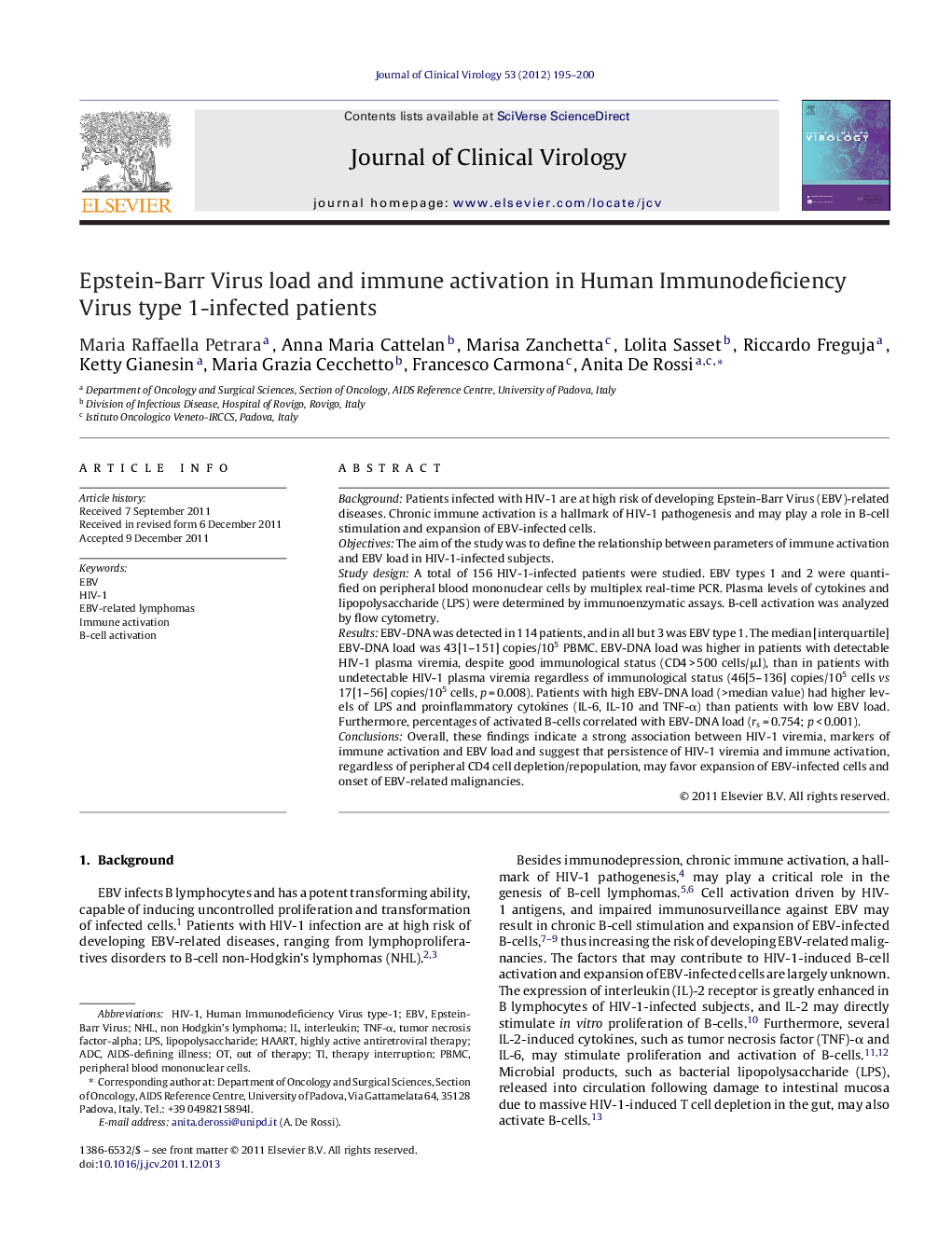| Article ID | Journal | Published Year | Pages | File Type |
|---|---|---|---|---|
| 3369339 | Journal of Clinical Virology | 2012 | 6 Pages |
BackgroundPatients infected with HIV-1 are at high risk of developing Epstein-Barr Virus (EBV)-related diseases. Chronic immune activation is a hallmark of HIV-1 pathogenesis and may play a role in B-cell stimulation and expansion of EBV-infected cells.ObjectivesThe aim of the study was to define the relationship between parameters of immune activation and EBV load in HIV-1-infected subjects.Study designA total of 156 HIV-1-infected patients were studied. EBV types 1 and 2 were quantified on peripheral blood mononuclear cells by multiplex real-time PCR. Plasma levels of cytokines and lipopolysaccharide (LPS) were determined by immunoenzymatic assays. B-cell activation was analyzed by flow cytometry.ResultsEBV-DNA was detected in 114 patients, and in all but 3 was EBV type 1. The median [interquartile] EBV-DNA load was 43[1–151] copies/105 PBMC. EBV-DNA load was higher in patients with detectable HIV-1 plasma viremia, despite good immunological status (CD4 > 500 cells/μl), than in patients with undetectable HIV-1 plasma viremia regardless of immunological status (46[5–136] copies/105 cells vs 17[1–56] copies/105 cells, p = 0.008). Patients with high EBV-DNA load (>median value) had higher levels of LPS and proinflammatory cytokines (IL-6, IL-10 and TNF-α) than patients with low EBV load. Furthermore, percentages of activated B-cells correlated with EBV-DNA load (rs = 0.754; p < 0.001).ConclusionsOverall, these findings indicate a strong association between HIV-1 viremia, markers of immune activation and EBV load and suggest that persistence of HIV-1 viremia and immune activation, regardless of peripheral CD4 cell depletion/repopulation, may favor expansion of EBV-infected cells and onset of EBV-related malignancies.
